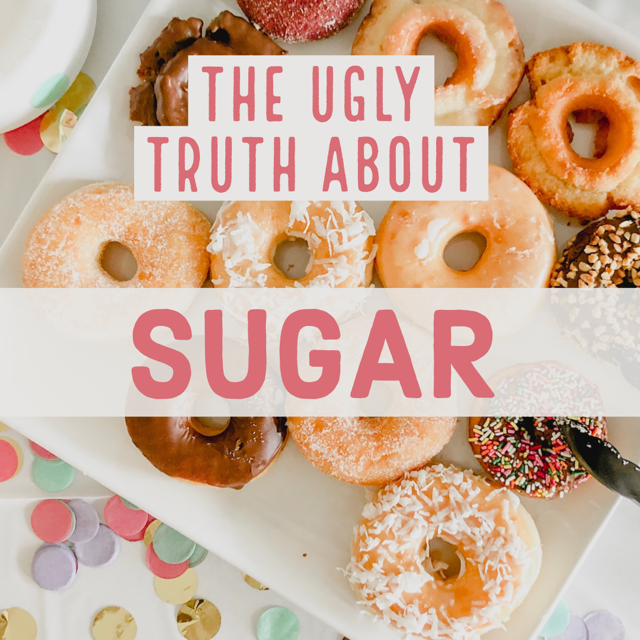The Ugly Truth About, Sugar.
Too much added sugar is one of the leading causes of obesity, diabetes and cardiovascular disease. Here’s what you can do about it.
Sugar is present naturally in all foods that contain carbohydrates. Typically, in moderation, consuming whole foods that contain sugar is not bad. Our bodies tend to digest these foods more steadily and the sugar provides a consistent supply of energy.
However, consuming large quantities of sugar, especially those added by manufacturers to produce processed foods, can take a toll on your health.
When you consume sugar, in any form, it immediately raises your blood sugar levels. Elevated blood sugar causes your pancreas to produce insulin, and insulin helps to lower those levels. Prolonged elevation of sugar levels causes the pancreas to fall behind in producing insulin, and results in constantly elevated blood sugar levels, which overtime can lead to diabetes, heart disease, elevated triglycerides, high blood pressure, and cancer.
Additionally, high amounts of sugar overload the liver which metabolizes it the same way as alchohol and then converts dietary carbohydrates to fat… key contributor to obesity, liver disease/diabetes and ultimately heart disease.
Why is it so hard to kick?
It’s delicious and our brain gets hooked as soon as we consume it. Sugar triggers dopamine, our “feel good” hormone, to be rapidly released which results in a high. Yes, the sugar high is a real thing. We feel amazing after we eat sugar, but once that high wears off, we crash. To feel better, we eat more sugar to achieve the same high and ultimately crash again. And the roller coaster continues until our body starts to shut down.
Ok, I’m sold. No sugar, candy, cookies, and cakes… right?
Generally, yes. However, sugar likes to hide or call itself by other names.
ADDED or HIDDEN SUGARS OFTEN FOUND IN:
- Condiments: ketchup, barbecue sauce, teriyaki sauce
- Pasta, bread + crackers
- Salad dressing
- Yogurt
- Tomato sauce
Food labels are the best way to identify added sugars… the fewer the ingredients, the better. The usual suspects on labels: corn syrup, molasses, high-fructose corn syrup, honey, agave, cane sugar, dextrose, fructose, sucrose, fruit juice concentrates, coconut sugars, sugar alochols
In a study conducted by the CDC Center for Health and Nutrition, it uncovered the most common contributors of added sugar:
| Where does your added sugar come from? | ||
| Rank | Food Group | Proportion of Intake |
| 1 | Soda/energy/sports drinks | 42.2% |
| 2 | Grain-based desserts | 11.9% |
| 3 | Fruit drinks | 8.5% |
| 4 | Dairy desserts | 5.5% |
| 5 | Candy | 5.0% |
| 6 | Ready-to-eat cereals | 2.9% |
| 7 | Sugars/honey | 4.1% |
| 8 | Tea | 3.8% |
| 9 | Yeast breads | 2.3% |
| 10 | Syrups/toppings | 1.4% |
OUR TAKE:
From Daybreak’s perspective, you don’t need to maniacally count sugar calories. For our members, we find sticking to whole foods, reading labels to ensure no or very little amounts of added sugar will do the trick. And yes, it’s okay to splurge on that whoopie pie for your Aunt Bessie’s birthday… as long as you bring us one.

Helpful and straightforward. Thanks!